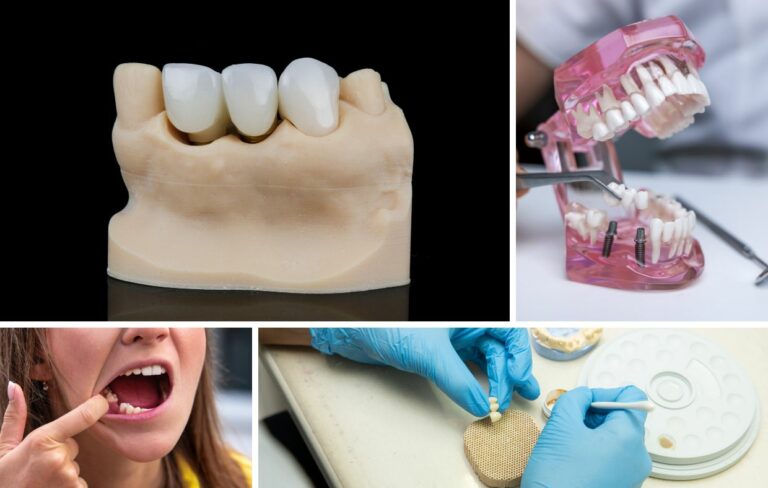Book Appointment Now
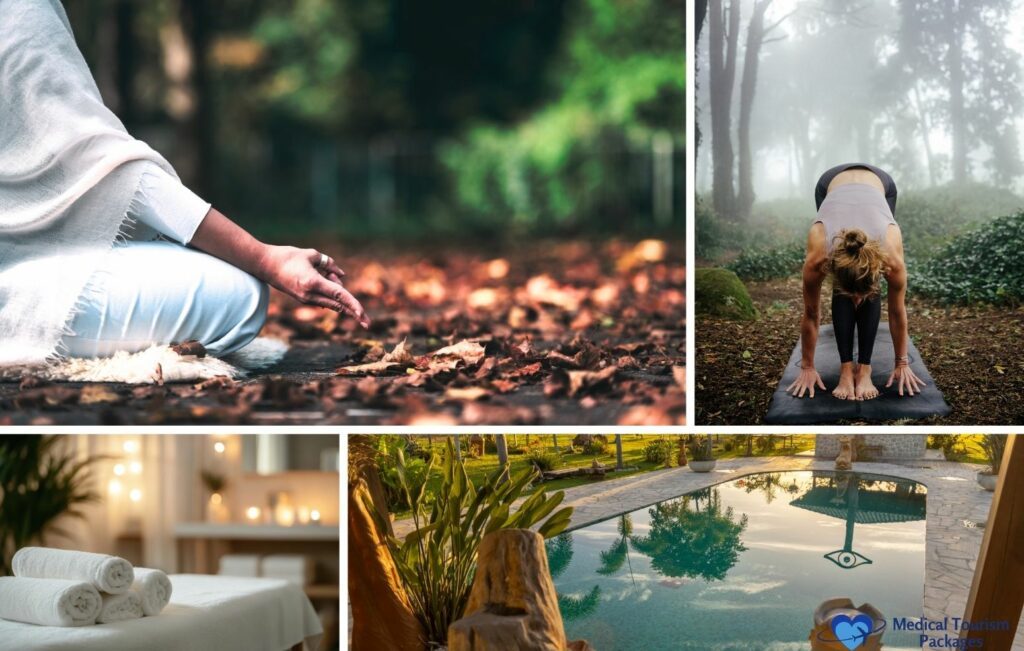
Wellness Retreats for Stress Relief: Why Look Beyond a Standard Vacation?
Life today often feels overwhelming. Constant connectivity, work pressures, and blurred personal/professional lines contribute to widespread stress and burnout. People feel mood swings, sleep problems, fatigue, and trouble concentrating. This situation is changing how people travel. Many now look for trips that actively help them manage stress and feel better, not just escape for a bit. This guide explores wellness retreats focused on stress relief, and also touches upon how companies like Medical Tourism Packages facilitate health and wellness travel.
This interest fuels the growth of wellness tourism, a market expected to hit $1.4 trillion by 2027, according to hospitality industry analysis from EHL Insights. It has grown faster than general tourism for years, as reported by the Global Wellness Institute, showing a shift towards travel as a health investment. Younger people, especially, spend more on wellness. The demand isn’t just a trend; it shows a real need for ways to counter chronic stress.
What Exactly is a Stress Relief Wellness Retreat?
A wellness retreat involves traveling to improve health through physical, mental, or spiritual activities. For stress relief, it means intentionally stepping away from daily life to slow down and focus on self-care.
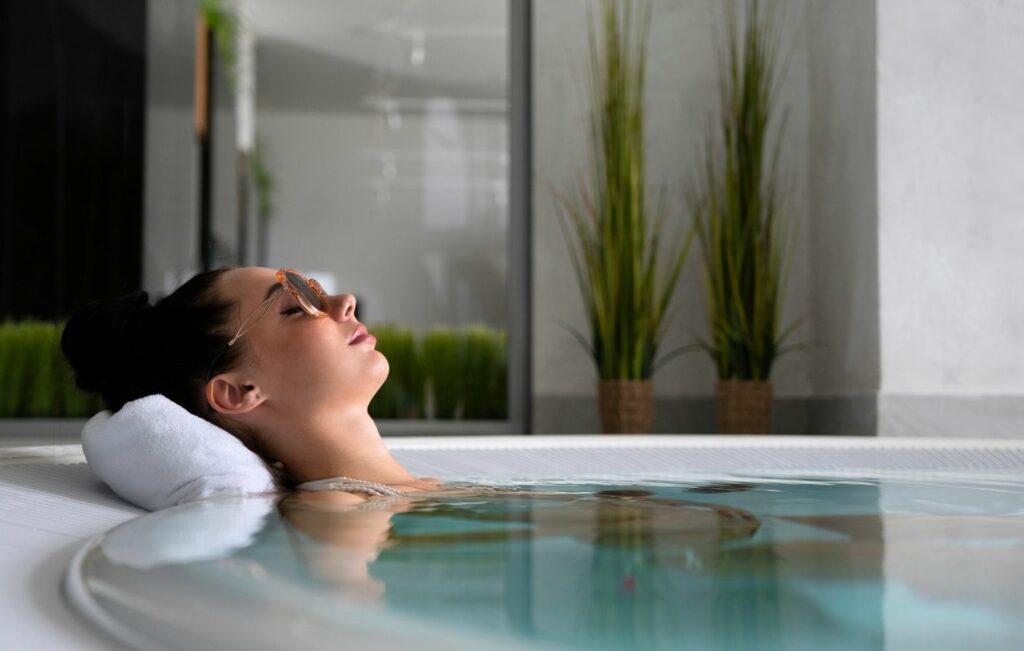
These retreats look at well-being as a connection between mind, body, and spirit. While some focus on fitness or weight loss, the main goal here is reducing stress. This means finding inner peace, emotional balance, mental clarity, and learning ways to handle stress back home.
How Retreats Differ from Vacations
Both vacations and wellness retreats offer a break, but they have different aims. Vacations usually focus on leisure and sightseeing without much structure. Sometimes, this lack of structure, or even the logistics, can add stress.
Wellness retreats, however, are structured for health improvement and learning new skills. They provide a specific environment for goals like stress reduction. The key difference is the focus on long-term benefits. Vacations offer temporary relief; the good feelings often fade quickly – sometimes called the “vacation effect” in research published in PMC (PubMed Central). Retreats aim to give people tools and habits (like mindfulness) they can use long after leaving. Research, like the PMC study, suggests these benefits can last for weeks or months. This focus on intentional change and practical skills separates a wellness retreat from a standard holiday.
Do These Retreats Actually Work for combatting stress?
The effectiveness of wellness retreats in combatting stress is supported by both personal experiences and scientific research, which points towards measurable benefits, especially concerning stress management. Research shows real benefits for stress management. Studies, such as one published in the Journal of Wellness, find significant drops in reported stress, anxiety, depression, and tiredness. People often report better moods, more energy, improved self-compassion, better mindfulness, and higher quality of life. Better sleep is also common.
Numbers back this up. Studies show lower levels of stress markers like cortisol and blood pressure, as documented in a PMC observational study. That study found blood pressure dropped significantly after a one-week retreat (systolic by 16.1 mmHg, diastolic by 9.3 mmHg). Other research has reported significant drops in stress levels after week-long programs. Quality of life improvements have also been observed.
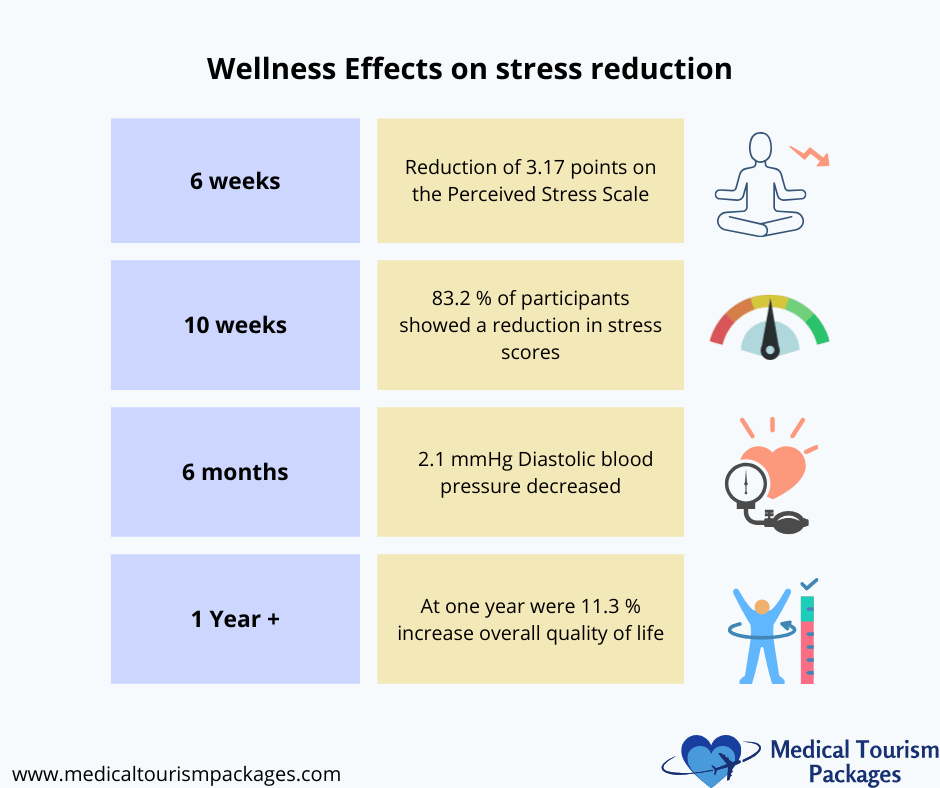
These benefits often last. Studies show improvements can continue for at least six weeks (PMC study), ten weeks, six months, or even a year or more, especially for programs like Mindfulness-Based Stress Reduction (MBSR), according to research in Frontiers in Psychology. MBSR has strong evidence showing it helps reduce stress, anxiety, and depression across different groups. Studies on Ayurvedic and general yoga/wellness retreats also show positive outcomes, though often based on smaller studies like the one in PMC.
While the evidence for short-to-medium term benefits is good for many retreat types, more research is needed on long-term effects (beyond a year) for all the different formats (PMC study). Still, existing research suggests retreats offer real advantages over a typical vacation.
Why Professionals See Value
Medical and wellness professionals often recognize the value of these immersive experiences. Doctors, psychologists, and therapists often see wellness retreats as useful tools for well-being and stress management. They point to key factors that make these experiences effective.
The structured, supportive setting, away from daily triggers, is often mentioned. This allows people to focus on healing and learning. Expert guidance from instructors, teachers, or therapists provides instruction and support.
Many retreats use evidence-based methods known to help with stress or trauma, like Cognitive Behavioral Therapy (CBT), Dialectical Behavior Therapy (DBT), EMDR, Somatic Experiencing, or systems like Ayurveda. The focused nature of a retreat allows for deeper work than weekly sessions, which can speed up progress, especially for those dealing with major stress or burnout. Professionals often see retreats not just as relaxation, but as ways to start real behavioral and psychological changes.
Retreats, Therapy, and Self-Care
Understanding how retreats fit alongside other forms of support is useful. It’s helpful to know the difference between retreats, therapy, and personal self-care, as each helps in different ways. (See the section below for how Medical Tourism Packages fits into this picture).
- Wellness Retreats: Short-term (days/weeks), immersive experiences in a calm setting. Usually offer a mix of activities (yoga, meditation, workshops), expert guidance, and community support. Good for a reset, starting healthy habits, learning skills, and deep relaxation away from daily life.
- Therapy (e.g., Psychotherapy): Regular (often weekly) sessions over months or years with a licensed professional. Usually in a clinical setting, focusing on specific psychological issues, trauma, or diagnosed conditions. Provides long-term, in-depth support.
- At-Home Self-Care: Ongoing, self-directed daily practices like exercise, healthy eating, mindfulness, hobbies, sleep. Needs personal discipline; lacks the structure, guidance, or dedicated environment of a retreat or the specialized focus of therapy.
Retreats generally aren’t a replacement for therapy for serious mental health conditions, unless they are specifically designed as therapeutic programs run by clinicians. But they can work well alongside therapy – as a boost before starting, during, or to enhance self-care afterward. The best approach depends on individual needs, the severity of stress, resources, and preferences. For many, combining these – maybe a retreat to reset, therapy for deeper issues, and daily self-care – offers the most complete path to well-being.
Medical and Wellness Travel Options with MTP
While this guide focuses broadly on stress relief retreats, it’s important to understand the services offered by facilitators like Medical Tourism Packages (MTP). MTP specializes in coordinating both medical procedures and curated wellness packages for international clients in specific destinations: Colombia, Costa Rica and Panama.
- Medical Tourism Facilitation: MTP’s core service involves connecting patients with vetted hospitals, clinics, and specialists for a wide range of medical and surgical treatments in their partner countries. This includes handling logistics like appointments, travel arrangements, and accommodation, aiming for a smooth and supported experience for those seeking specific healthcare abroad.
- Wellness Package Facilitation: Recognizing the growing demand for proactive well-being, MTP also offers access to curated wellness packages. These might include stress management programs, yoga retreats, spa holidays, detox programs, or nature-based wellness experiences located in Costa Rica, Panama, or Colombia. MTP leverages its local knowledge and partnerships to provide vetted wellness options.
- Destination Expertise: MTP utilizes the unique strengths of each location. Costa Rica’s renowned biodiversity offers ideal settings for nature immersion and recovery. Panama boasts modern infrastructure and accessible coastal areas. Colombia provides advanced medical care alongside rich cultural experiences. MTP helps clients choose the destination and package (medical, wellness, or potentially a combination for recovery) that best suits their needs.
- Benefits of Facilitation: Whether pursuing medical treatment or a wellness retreat, using a facilitator like MTP can simplify the process. Benefits include access to vetted providers and facilities, coordination of complex logistics, local support, and often, package pricing that bundles services.
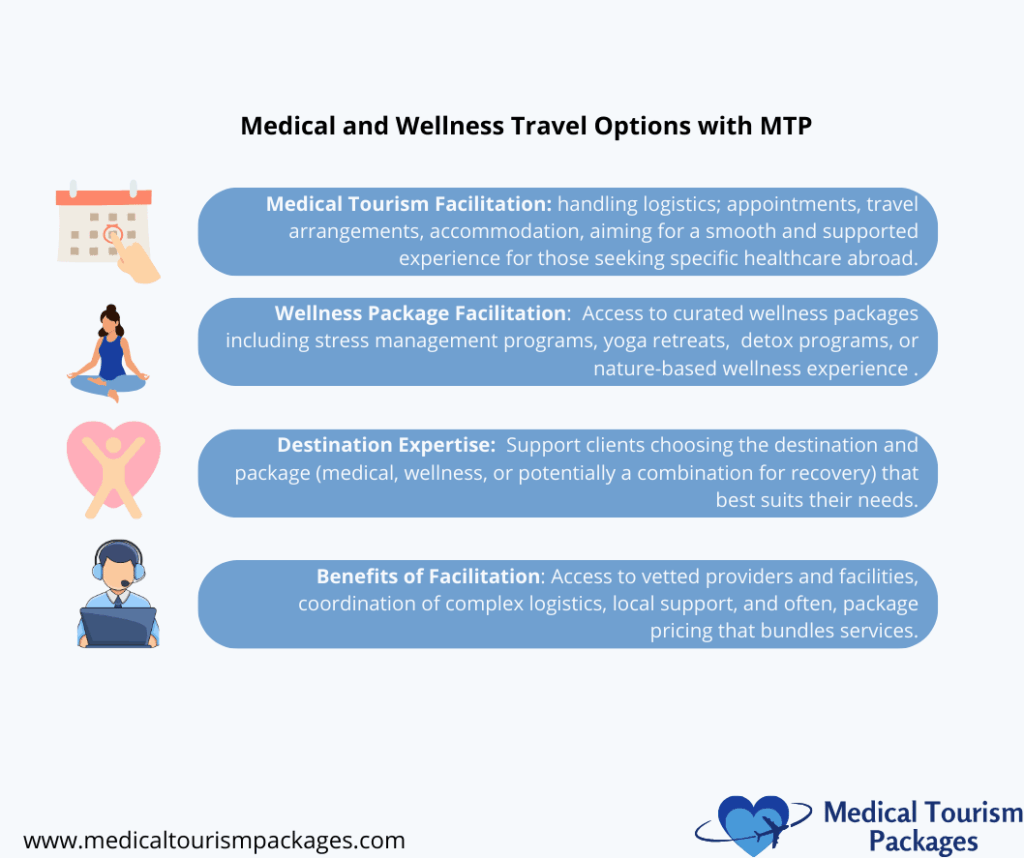
Understanding this distinction helps clarify that while general wellness retreats exist globally, specialized facilitators like MTP provide structured access to both medical care and specific wellness programs within their chosen destinations.
Finding the Right Retreat Type
The wellness retreat world is varied, with options for different needs and stress relief goals. Knowing the types helps you choose wisely, whether booking independently or exploring options through facilitators like MTP.
- Mindfulness & Meditation: Focus on training the mind for present awareness, less mental chatter, better focus, and emotional control. Activities include guided meditation, learning techniques (like Vipassana, Zen, Metta/loving-kindness), workshops, and quiet time. Silent retreats remove talking for deeper introspection. MBSR programs offer a structured, evidence-based approach for stress.
- Yoga: Use physical postures (asanas), breathwork (pranayama), and meditation for stress relief and mind-body connection. Options range from gentle Hatha or Restorative to active Vinyasa or Ashtanga, or spiritual Kundalini. Yin yoga holds poses longer to release tension.
- Nature Immersion & Ecotherapy: Use nature’s healing effects. Activities include hiking, forest bathing (mindful time in woods), outdoor meditation, or just being in quiet places like mountains or coasts. Aims to reduce stress and improve mood through nature connection. Costa Rica, an MTP destination, excels here.
- Digital Detox: Require disconnecting from devices (phones, laptops). Helps reduce digital overload stress, improve focus, sleep, and real-world connections. Often includes mindfulness, nature, workshops.
- Spa & Pampering: Focus on relaxation via spa treatments like massages, facials, hydrotherapy. Usually in resorts or spa facilities, offering an indulgent escape. Often included in wellness packages.
- Holistic & Specialized: Combine methods. Examples:
- Ayurveda: Ancient Indian system balancing individual constitution (dosha) via diet, herbs, specific massages (Abhyanga, Shirodhara), detox (Panchakarma), yoga, meditation.
- Somatic Experiencing: Body-focused methods to release stored trauma and stress through mindful movement and awareness.
- Sound Healing: Uses instruments (singing bowls, gongs) for deep relaxation and anxiety reduction through vibrations.
- Breathwork: Teaches breathing patterns (diaphragmatic, coherent breathing) to regulate the nervous system, reduce stress hormones, and improve focus.
Table 1: Quick Look at Retreat Types
| Retreat Type | Main Goal | Activities | Good For | Intensity |
|---|---|---|---|---|
| Mindfulness & Meditation | Mental calm, emotional regulation | Guided/silent meditation, workshops, MBSR, Vipassana, Zen | Those wanting less anxiety, better focus | Varies (low to high) |
| Yoga | Mind-body connection, flexibility, stress release | Asana (various styles), pranayama, meditation | People enjoying physical practice, better body awareness | Varies (gentle to vigorous) |
| Nature Immersion / Ecotherapy | Using nature’s healing, disconnecting, grounding | Hiking, forest bathing, outdoor meditation | Nature lovers, those feeling overwhelmed by city life | Low to Moderate |
| Digital Detox | Disconnecting, reducing digital overload, focus | Tech-free time, mindfulness, nature activities, tech habit workshops | People overwhelmed by screens, wanting better focus | Moderate (can be tough initially) |
| Spa & Pampering | Deep relaxation, physical rejuvenation | Massages, facials, body treatments, hydrotherapy | Those wanting physical relaxation, luxury self-care | Low |
| Holistic / Specialized | Using specific ancient or body-based methods | Ayurveda (diet/herbs), Somatic (body awareness), Sound (vibrations), Breathwork (breathing patterns) | People interested in specific systems or addressing trauma/energy blocks | Varies (often moderate) |
| Clinically-Informed / Mental Health | Addressing specific mental health issues | Evidence-based therapies (CBT, DBT, EMDR), licensed therapists | People needing targeted support for diagnosed conditions or significant distress | Moderate to High (Therapeutic) |
| Luxury | Premium experience, exclusivity, personalization | High-end facilities, gourmet food, bespoke services | Those wanting indulgence, privacy, tailored experience | Varies (relaxed or intensive) |
| Budget | Accessibility, core practices, community | Simpler rooms, basic amenities, foundational practices | Those prioritizing affordability and core benefits | Varies (often moderate) |
What’s a Retreat Like Day-to-Day?
Knowing the typical parts of a stress relief retreat helps set expectations. Each is different, but common elements create a supportive space for relaxation and growth.
Daily Flow
Most stress relief retreats have a structured but balanced schedule. Days often start early with gentle activities like sunrise yoga or meditation to center and energize. Then, a healthy breakfast.
The rest of the day mixes planned activities and free time. Mornings/afternoons might have workshops on stress management, mindfulness, or nutrition. Therapy sessions like massages or consultations might be scheduled.
Importantly, there’s usually plenty of free time. This lets people rest, reflect, journal, explore, connect, or just be still – vital for absorbing lessons and relaxing the nervous system. Evenings could include restorative yoga, sound healing, group chats, or quiet time. This mix of activity and rest, guidance and personal space, is key.
The Setting Matters
A retreat’s location isn’t random; it’s often chosen to help the healing process. Most are in quiet, natural places – mountains, coasts, forests, countryside. MTP’s destinations like Costa Rica, Panama, and Colombia offer diverse natural settings.
This focus on nature comes from knowing that natural settings reduce stress and restore well-being. Being outdoors, doing things like forest bathing, or just having nature views can lower cortisol, blood pressure, and improve mood, according to various studies on ecotherapy.
The facility itself is also designed for calm. Think specific architecture, calming decor, yoga/meditation spaces, quiet areas, and comfortable (often simple) rooms. The goal is a peaceful place that limits distractions, helping the nervous system switch from stress to rest-and-repair mode. Being away from familiar stressors and in a tranquil setting helps relaxation and self-discovery.
Food for Body and Mind
Food is usually a central part of the retreat experience, seen as part of the healing process. Meals are typically healthy, nutrient-rich, and support the retreat’s aims. Often, menus are plant-based, use organic/local ingredients, and avoid processed foods, sugar, caffeine, and alcohol. Access to fresh, local cuisine is often a feature highlighted in MTP’s destination countries.

The link between diet and mental health is recognized. Healthy food is tied to better mood, energy, digestion, and less inflammation – all helping stress resilience. Ayurvedic retreats tailor diets to balance individual constitutions (doshas). Many retreats also teach about nutrition through workshops or cooking classes, helping people maintain healthy habits afterward. Food is treated as a tool for stress reduction and lasting change.
Community Connection
While quiet time is important, connection with others is often a big part of the therapeutic experience. Retreats gather people with similar goals or challenges, creating a space of understanding and support.
Group activities like workshops, discussions, shared meals, or group classes foster this connection. Sharing experiences with others on a similar path can lessen feelings of isolation often linked to stress. Being open in a safe space can help emotional healing and provide encouragement. Many people find unexpected value in the friendships formed. For solo travelers, retreats offer a way to connect while focusing on themselves. This community aspect adds a powerful layer to the retreat.
Choosing Your Retreat
Picking the right wellness retreat is key for a good experience. With so many choices, you need to think about your needs and do some research. Consider whether you are booking independently or exploring options via a facilitator like MTP.
Step 1: Know Your Goals
First, figure out what you want from the retreat. What specific results are you looking for? Deep relaxation? Learning coping skills (mindfulness, meditation)? A digital detox? Dealing with burnout or grief? Improving fitness? Exploring spirituality? Or just a general reset? Having clear goals helps narrow options. Also, consider your current mental/physical state and any specific issues (pain, anxiety). Are you seeking purely wellness, or combining it with recovery from a medical procedure?
Step 2: Check Logistics (Place, Time, Cost)
Practical things matter for feasibility and the overall experience.
- Location: Where is it? Do you prefer mountains, beach, forest? What’s the climate? How easy/costly is travel? MTP specializes in Costa Rica, Panama, and Colombia. Popular spots globally include Thailand, India, Bali, Italy, Spain, Switzerland, and the US.
- Duration: Retreats range from weekends (1-3 days) to week-long trips (4-7 days) or longer (8+ days). Short ones offer a quick recharge; longer ones allow deeper work. Some research suggests 5-7 days might be good for seeing real benefits. Choose based on your time, goals, budget.
- Budget: Costs vary hugely. Budget options might start around $100-$200/day; luxury can be thousands/day. Set a budget early. Check the total cost: retreat fee, travel, extras. Know what’s included (room, meals, classes, therapy) and the cancellation policy. Facilitators like MTP can sometimes offer package deals.
Step 3: Look at the Program (Activities, Leaders, Schedule)
Beyond logistics, evaluate the retreat program itself.
- Activities: Do the activities (yoga type, meditation, workshops, therapies like Ayurveda) match your interests and goals? Check if MTP’s wellness packages align with your desired activities.
- Expertise: Who’s leading it? Check their qualifications, experience, and specialty. Are they licensed for therapy? Does their style fit you? MTP vets the providers included in their packages.
- Structure: Is the schedule fixed or flexible? Which do you prefer – more guidance or more freedom?
Step 4: Research (Reviews, Website)
Do your homework before booking to ensure a good fit.
- Reviews: Look for reviews from past attendees on the retreat’s site, booking platforms (like BookRetreats.com or Retreat.Guru), or independent sites. Look for specifics, not just generic praise. Consistent themes in reviews are useful. Look for reviews specific to packages offered by facilitators if applicable.
- Website: Check the retreat’s website or the facilitator’s package description (like MTP’s). Does it look professional? Is info clear about the schedule, costs, staff qualifications, location, policies (especially cancellation)? Do photos/videos seem real, or overly polished? Lack of detail can be a warning sign.
Choosing requires balancing hopes with reality. Marketing often shows perfect scenes. Look past that. Check website claims against detailed reviews. Clear, professional information helps you gauge the real experience and pick what fits your needs.
Table 2: Questions for Choosing a Retreat
| Category | Key Questions | Why Ask |
|---|---|---|
| Goals | What specific stress relief do I want (relaxation, skills, processing)? What’s my main reason? Gentle reset or big change? | Aligns your needs with the retreat’s focus. |
| Program | What activities are included (yoga/meditation types, workshops)? What’s the daily schedule (fixed/flexible)? What skills will I learn? | Checks if content matches interests/goals; sets expectations. |
| Leaders | Who are the instructors/therapists? What are their qualifications/experience for stress relief/my needs? Licensed for therapy? | Ensures quality guidance and safety, especially for therapeutic retreats. |
| Logistics & Cost | Total cost (travel, extras)? What’s included (meals, room type, activities, therapy)? Cancellation policy? How to get there? | Clarifies cost, avoids surprises, checks practicality. |
| Environment & Room | What’s the location like (nature, climate)? Quiet? Room details (private/shared, amenities)? Group size? | Affects comfort, relaxation, atmosphere. |
| Suitability | Is it right for beginners/my level? Does the philosophy fit me? Any health prerequisites? | Ensures retreat matches your readiness and values. |
Potential Downsides
Wellness retreats can be great, but it’s good to be realistic about challenges and potential issues.
Expectations vs. Reality
Marketing often promises easy transformation. While retreats help, they aren’t instant cures for chronic stress or deep issues. Real change means using what you learned back home. The retreat itself might bring up tough emotions or physical discomfort (like in long meditations). Budget retreats offer basic facilities, unlike luxury images. Matching expectations to the retreat’s style avoids disappointment.
The Unregulated Market
The wellness retreat industry isn’t well-regulated, a point made by the Global Wellness Institute. Quality, safety, and facilitator qualifications vary a lot. Unlike licensed therapy, there’s often no oversight for general wellness retreats. You need to check things carefully yourself. Verify leader credentials, ask about safety (especially for adventure activities), and read independent reviews. The growing market has good and bad operators, so vetting is important for safety and benefit. Using a facilitator like MTP can help mitigate this risk as they typically vet their partner facilities and providers for both medical and wellness services.
Possible Negative Experiences
Most experiences are positive, but bad ones happen. The intense, inward focus can bring up difficult emotions or trauma, possibly feeling overwhelming without enough support. For people with unstable mental health, some retreats (intensive, silent, psychological) could be destabilizing without checking with a doctor first. Physical discomfort, group issues, or isolation (in silent retreats) can occur. Choosing a retreat matching your capacity and maybe getting advice beforehand helps reduce risks. Not every style or leader fits everyone.
Common Questions (FAQs)
Here are answers to frequent questions about wellness retreats:
- What’s the main goal of a stress relief retreat? To offer time and space to disconnect, relax, learn stress management tools (mindfulness, yoga, breathwork), and improve overall well-being for lasting resilience.
- Can I go alone? Yes, many do. It’s a good way to focus on yourself. Retreats usually have a welcoming atmosphere for solo attendees to connect if they want. Some pair solo travelers in rooms to save money.
- Need yoga/meditation experience? Usually no, unless stated. Many cater to all levels, including beginners. Instructors offer guidance. Retreats can be a great place to start learning. Check the description if unsure.
- What to pack? Comfortable clothes for activities (yoga pants, layers), walking shoes, toiletries, meds, water bottle, maybe a journal. Depending on location: swimwear, sun protection, bug spray, warmer clothes. Check if yoga mats are provided. Often best to leave valuables/laptops at home.
- Typical cost? Varies a lot by location, duration, room type, luxury level, included services, leader expertise. Budget options might start around $100-$200/day. Mid-range: $250-$500/day. Luxury/specialized: $1000+/day. Always check what’s included (meals, room, activities, therapy, transfers) and add travel costs. Facilitators like MTP may offer package pricing for wellness or medical trips.
- Effective long-term? Research (like the PMC study) shows benefits can last weeks/months. Long-term success depends on using learned practices at home. Retreats offer tools/reset; lasting change takes ongoing effort.
- Dietary restrictions? Most retreats accommodate needs (vegetarian, vegan, gluten-free, allergies). Inform them clearly when booking. Facilitators can help communicate these needs.
- Same as therapy? Generally no. Most focus on well-being and self-care, not clinical treatment for diagnosed disorders. Some mental health retreats are therapeutic and led by therapists. Retreats can complement therapy but usually don’t replace it unless designed that way. This is distinct from traveling for specific medical procedures facilitated by companies like MTP.
A Brief History of Wellness Travel
Traveling for health isn’t new; it has ancient roots, evolving significantly over time.
Ancient Times: Baths, Pilgrimages, Health Systems
Early forms of wellness travel existed thousands of years ago.
- Water Cures: Natural springs (especially thermal/mineral) were valued for healing. Ancient Greeks built facilities near sacred springs. Romans created large public baths (thermae) for hygiene, relaxation, and healing, using different water temperatures, steam, massage. Similar traditions existed worldwide (Japanese onsens, Turkish hammams). These show long belief in water therapies, as detailed in a PMC article on thermal medicine history.
- Healing Pilgrimages: People traveled to sacred sites for healing. Greek temples for healing gods (like Asclepius) were destinations. In medieval Europe, religious pilgrimages to healing shrines were common.
- Holistic Systems: Ayurveda (India, ~3000-1500 BC) balances mind, body, spirit via diet, herbs, yoga, meditation. Traditional Chinese Medicine (TCM) also uses a holistic approach (acupuncture, herbs). These ancient systems influenced modern wellness retreats.
19th/Early 20th Century: Sanatoriums and Spas
As societies changed, health travel revived in the 19th century.
- Spa Towns: The 18th/19th centuries were a peak for European spa towns (Bath, Spa, Baden-Baden). They combined water therapy with luxury stays and social life for elites seeking cures/leisure.
- Sanatoriums/Nature Cures: Sanatoriums arose, mainly for illnesses like tuberculosis. They emphasized fresh air, rest, nutrition, sometimes water therapy (Kneipp Cure). Naturopathy and similar fields also grew, promoting self-healing and lifestyle changes, laying groundwork for modern wellness ideas, according to the Global Wellness Institute’s history page.
The Modern Retreat Movement
After antibiotics reduced sanatorium use, the mid-20th century saw today’s wellness movement start.
- Key Ideas: Halbert Dunn’s “high-level wellness” (1950s) focused on maximizing potential (Global Wellness Institute). Dr. John Travis opened early wellness centers (1970s). Interest in Eastern philosophy and alternative practices grew.
- Holistic Centers/Destination Spas: Places like Esalen Institute (founded 1962) mixed psychology, bodywork, spirituality. “Destination Spas” offered structured programs for holistic health and lifestyle change, unlike resort spas just for relaxation.
- Today’s Trends: Wellness tourism is huge, according to EHL Insights. Retreats are diverse. Trends include:
- Personalized programs.
- Focus on mental/emotional health (stress, anxiety).
- Mixing science and tradition (Ayurveda + modern methods).
- Longevity/preventative health focus.
- Digital detox programs.
- Sustainability emphasis.
- More affordable/shorter options alongside luxury.
History shows that traveling for health, stress relief, and connection is a lasting human desire.
Bringing Retreat Benefits Home
A retreat can start change, but lasting value comes from using what you learned daily.
- Keep Practicing: Regularly do key techniques (mindfulness, yoga, breathwork). Even short daily sessions (10-15 mins) help maintain clarity, balance, resilience. Fit them into your routine (morning, lunch break, evening).
- Live Mindfully: Bring awareness to everyday things – eating, walking, tasks. This helps manage stress as it happens.
- Supportive Home Space: Set up a spot for wellness practices. Add calming elements (scents, nature decor) to encourage practice.
- Healthier Habits: Use nutrition advice: more whole foods, less processed stuff/caffeine/alcohol. Prioritize good sleep habits.
- Realistic Goals/Boundaries: Don’t try everything at once. Set small goals. Practice boundaries learned (work hours, social plans, device use) to protect time/energy.
- Stay Connected: Keep in touch with retreat friends or find local groups (yoga studios, meditation centers) for support. Share with supportive friends/family.
- Reflect & Adapt: Check progress, note challenges, adjust routines. Wellness is ongoing. Be patient with yourself.
Using these strategies helps weave retreat benefits into daily life for lasting well-being.
Investing in Your Health Journey
Today’s demanding world creates a need for real stress relief and proactive health management. Wellness retreats offer more than a vacation; they are structured places for holistic well-being, focused on rejuvenation and stress reduction.
Evidence shows retreats can significantly improve mood, sleep, mindfulness, and reduce stress and anxiety. This comes from calm settings, expert guidance, healthy food, disconnecting, and community support.
Choosing well means considering goals, activities, logistics, and leader expertise. Options range from mindfulness or yoga to spas, digital detox, nature trips, or clinical programs. Researching options and reviews is important.
Whether seeking a dedicated stress-relief getaway, exploring preventative wellness, or incorporating wellness principles into recovery after a medical procedure, investing in health-focused travel is valuable. Facilitators like Medical Tourism Packages can help navigate options, offering expert coordination for medical treatments and access to curated wellness packages in destinations like Costa Rica, Panama, and Colombia. Ultimately, the right health travel experience, combined with integrating lessons at home, can be a significant step towards lasting well-being and a more balanced life.
Frequently asked questions about wellness retreats and stress management
How can I verify the qualifications of retreat leaders (instructors, therapists)?
Verify retreat leader qualifications by checking for transparent biographies detailing certifications (e.g., RYT for yoga, therapy licenses like LCSW or PsyD), years of experience, and specialties. Review retreat websites and packages, and directly contact organizers if information is missing. Always verify licenses for therapeutic leaders.
Are leaders required to be licensed if a retreat includes therapeutic elements (like CBT, EMDR)?
Leaders must be licensed mental health professionals if a retreat offers clinical therapy like CBT, DBT, or EMDR. Licenses may include psychologist (PhD, PsyD), psychiatrist (MD), or licensed clinical social worker (LCSW). General wellness activities like yoga do not require clinical licenses.
What’s the difference in required expertise between a general relaxation retreat and a specialized/therapeutic one?
General relaxation retreats require instructors certified in yoga, meditation, or spa services, while therapeutic retreats require clinical training like trauma therapy certifications. The expertise level aligns with the retreat’s depth, meaning specialized retreats demand deeper qualifications than general wellness retreats.
How do facilitators like MTP vet the qualifications of the retreat leaders in their packages?
Facilitators like MTP vet retreat leaders by verifying licenses, checking certifications, assessing experience, conducting interviews, and reviewing client feedback. Their goal is to ensure retreat leaders meet high standards for quality and safety before inclusion in curated packages.
What safety protocols should a well-run retreat have?
Well-run retreats have safety protocols including staff trained in first aid/CPR, emergency communication plans, evacuation routes, participant fitness screenings, hygienic facilities, and emotional support procedures for therapeutic retreats.
What questions should I directly ask the retreat organizer/facilitator about their staff?
Ask retreat organizers about staff qualifications, certifications, years of experience, staff-to-participant ratios, experience with target populations, licensure for therapeutic sessions, and emergency procedures.
Are there warning signs regarding retreat leader expertise?
Warning signs regarding retreat leader expertise include vague qualifications, refusal to verify credentials, exaggerated claims, absence of professional affiliations, poor reviews about leadership, and offering therapy without licensed professionals.

